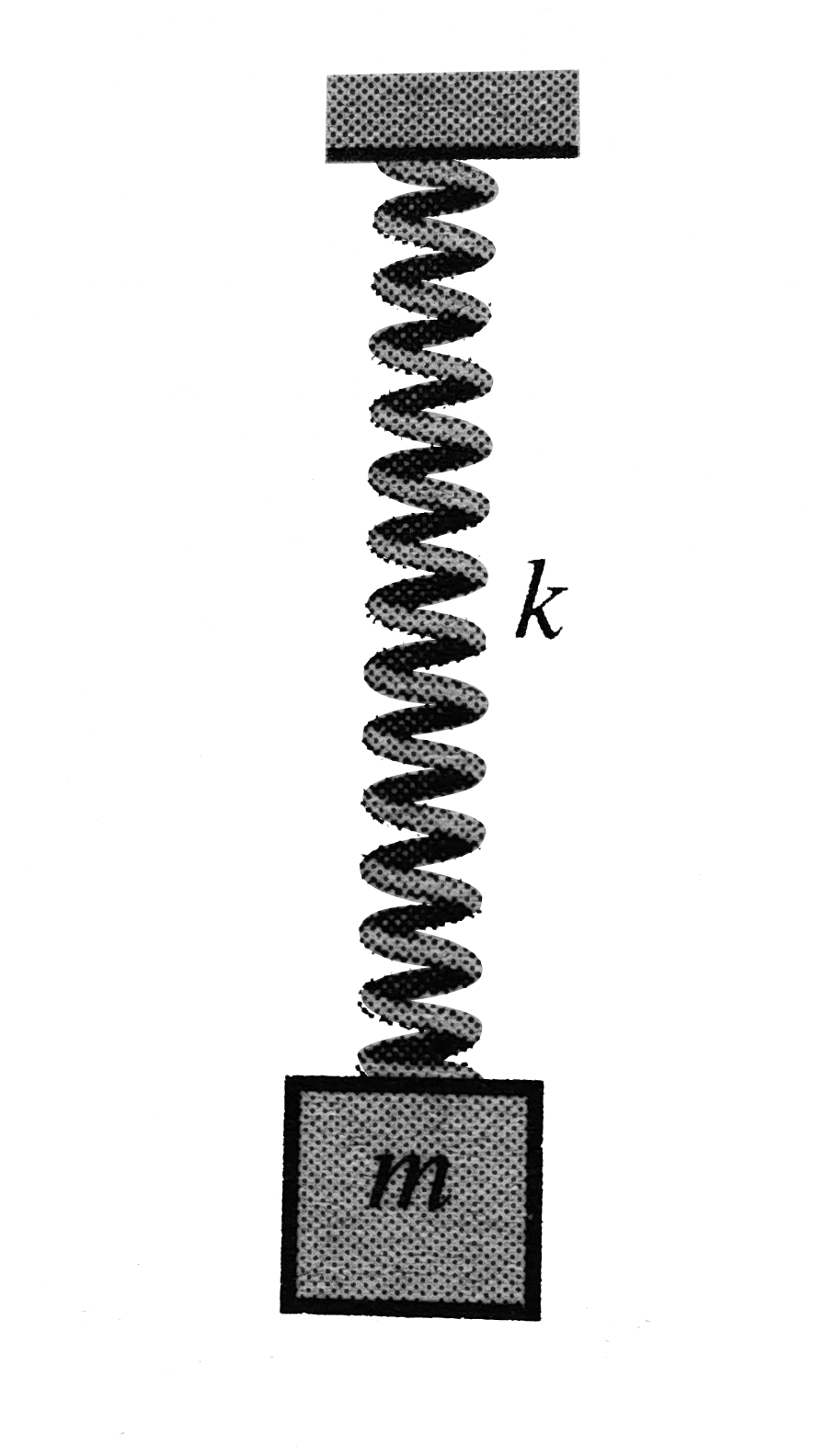A linear harmonic oscillator of force constant 2×106N/m and amplitude 0.01m has a total mechanical energy of 160J. Its
maximum potential energy is 160 J
maximum potential energy is 100 J
minimum potential energy is zero
minimum potential energy is 100 J
The correct Answer is:A
To solve the problem regarding the linear harmonic oscillator, we will follow these steps:
Step 1: Understand the Given Data
We have the following information:
- Force constant, k=2×106N/m
- Amplitude, A=0.01m
- Total mechanical energy, E=160J
Step 2: Recall the Formulas
In a harmonic oscillator, the total mechanical energy E is given by the sum of kinetic energy (KE) and potential energy (PE):
E=KE+PE
The potential energy at a displacement x is given by:
PE=12kx2
The maximum potential energy occurs when x=A (the amplitude), and the maximum kinetic energy occurs when x=0.
Step 3: Calculate Maximum Potential Energy
At maximum displacement (amplitude), the potential energy is:
PEmax=12kA2
Substituting the values:
PEmax=12×(2×106)×(0.01)2
Calculating:
PEmax=12×(2×106)×(0.0001)=12×200=100J
Step 4: Calculate Maximum Kinetic Energy
The maximum kinetic energy occurs when the displacement x=0:
KEmax=E−PEmax=160J−100J=60J
Step 5: Determine Minimum Potential Energy
The minimum potential energy occurs when the kinetic energy is at its maximum:
PEmin=E−KEmax=160J−60J=100J
Summary of Results
- Maximum Potential Energy: 100J
- Minimum Potential Energy: 100J
Conclusion
Based on the calculations:
- Maximum Potential Energy is 100J
- Minimum Potential Energy is 100J
We have the following information:
- Force constant, k=2×106N/m
- Amplitude, A=0.01m
- Total mechanical energy, E=160J
In a harmonic oscillator, the total mechanical energy E is given by the sum of kinetic energy (KE) and potential energy (PE):
E=KE+PE
The potential energy at a displacement x is given by:
PE=12kx2
The maximum potential energy occurs when x=A (the amplitude), and the maximum kinetic energy occurs when x=0.
At maximum displacement (amplitude), the potential energy is:
PEmax=12kA2
Substituting the values:
PEmax=12×(2×106)×(0.01)2
Calculating:
PEmax=12×(2×106)×(0.0001)=12×200=100J
The maximum kinetic energy occurs when the displacement x=0:
KEmax=E−PEmax=160J−100J=60J
The minimum potential energy occurs when the kinetic energy is at its maximum:
PEmin=E−KEmax=160J−60J=100J
- Maximum Potential Energy: 100J
- Minimum Potential Energy: 100J
Based on the calculations:
- Maximum Potential Energy is 100J
- Minimum Potential Energy is 100J
Similar Questions
Knowledge Check
- Question 1 - Select One
A simple harmonic oscillator has a frequency of 2.5 Hz and an amplitude of 0.05m. What is the period of the oscillations?
A0.4sB0.2sC8sD20s
A harmonic oscillation of force constant 4×106Nm−1 and amplitude 0.01 m has total energy 240 J. What is maximum kinetic energy and minimum potential energy?
View Solution
For the spring pendulum shown in fig. the value of spring constant is 3×104Nm and amplitude of oscillation is 0.1m. The total mechanical energy of oscillating system is 200 J. Mark out the correct option (s).View SolutionPassage I) In simple harmonic motion force acting on a particle is given as F=−4x, total mechanical energy of the particle is 10 J and amplitude of oscillations is 2m, At time t=0 acceleration of the particle is −16ms2. Mass of the particle is 0.5 kg.
At x=+1m, potential energy and kinetic energy of the particle areView SolutionPassage I) In simple harmonic motion force acting on a particle is given as F=−4x, total mechanical energy of the particle is 10 J and amplitude of oscillations is 2m, At time t=0 acceleration of the particle is −16ms2. Mass of the particle is 0.5 kg.
Potential energy of the particle at mean position isView SolutionPassage I) In simple harmonic motion force acting on a particle is given as F=−4x, total mechanical energy of the particle is 10 J and amplitude of oscillations is 2m, At time t=0 acceleration of the particle is −16ms2. Mass of the particle is 0.5 kg.
Displacement time equation equation of the particle isView SolutionForce acting on a particle is F=−8x in S.H.M. The amplitude of oscillation is 2 (in m) and mass of the particle is 0.5 kg. The total mechanical energy of the particle is 20 J. Find the potential energy of the particle in mean position (in J).
View SolutionA linear harmonic oscillator has a total mechanical energy of 200J. Potential energy of it at mean position is 50J. Find
(i) the maximum kinetic energy,
(ii)the minimum potential energy,
(iii) the potential energy at extreme positions.View Solution

